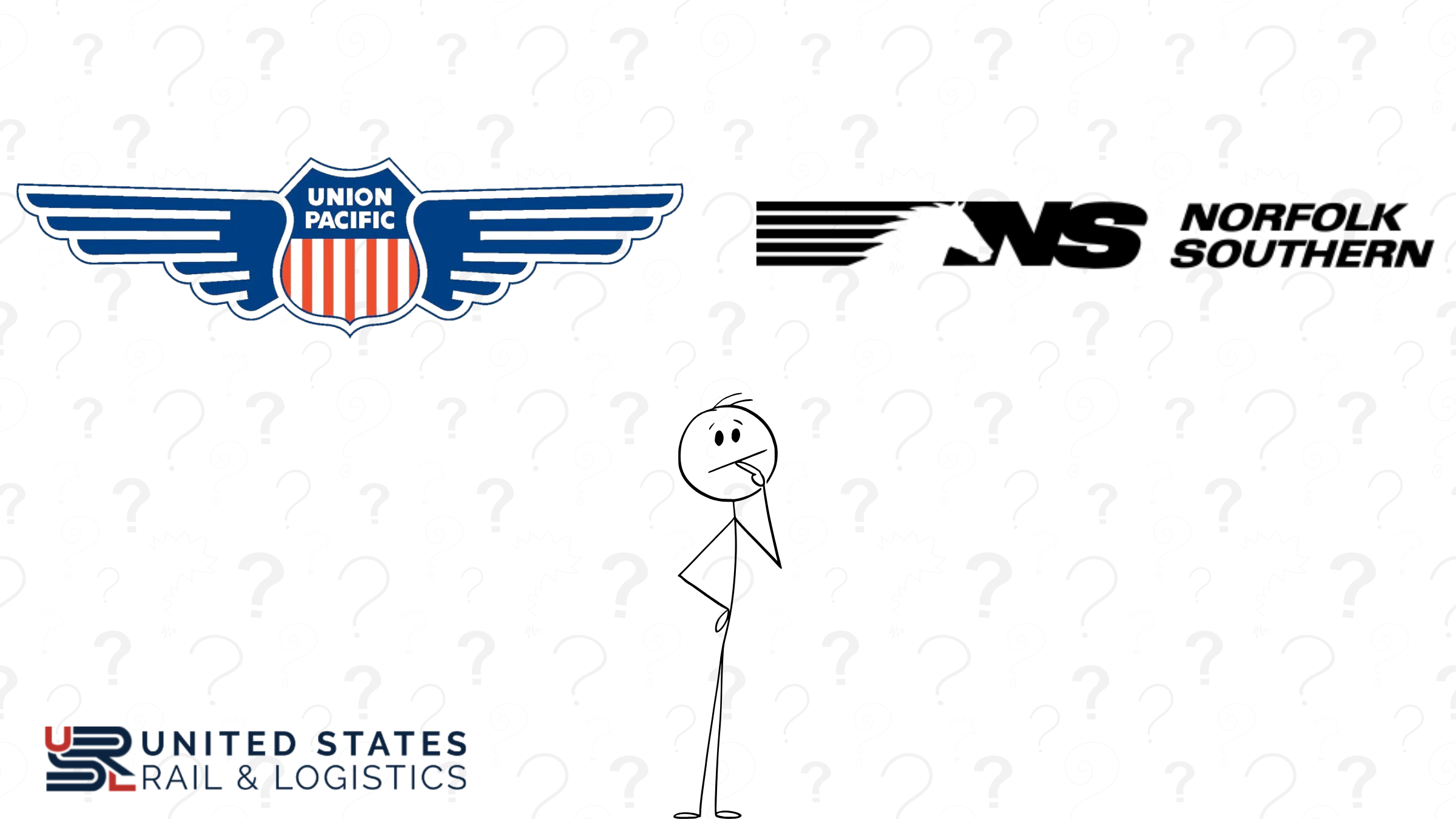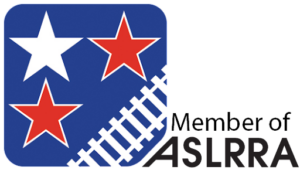The proposed Union Pacific (UP) and Norfolk Southern (NS) merger has sent shockwaves through the freight rail industry…and for good reason. If approved, this landmark deal would create the first coast-to-coast, Pacific-to-Atlantic Class I railroad in the United States under a single corporate umbrella.
But what does this mean for shippers? Will it streamline operations and improve service? Or will it reduce competition and drive up costs?
Let’s explore the pros, cons, and implications of this potential rail merger from a shipper’s point of view.
The Big Picture: Why This Merger Matters
Together, UP and NS operate two of the most expansive rail networks in North America. UP dominates the western U.S., while NS holds a strong position in the East. Merging the two would form a transcontinental giant with access to:
- Major U.S. ports on both coasts
- Key industrial zones and manufacturing hubs
- Strategic intermodal terminals and rail corridors
If the merger gains STB approval, this deal would fundamentally reshape the North American freight landscape, creating an unprecedented single-line rail service from the Pacific to the Atlantic.
The Core Question: Is This Merger Good for Shippers?
The impact of a UP–NS merger depends on whether it creates meaningful improvements in service, efficiency, and visibility, or if it erodes competition and flexibility in an already consolidated industry.
Let’s break it down.
Potential Benefits of a UP–NS Merger
- Seamless End-to-End Service
- Today, shippers moving freight cross-country often experience delays at interchange points, typically in Chicago or Memphis, when transitioning between UP and NS. A unified network could eliminate these inefficiencies by offering:
- Single-line service coast to coast
- Fewer handoffs, reducing delays and mishandling
- Improved shipment visibility and system integration
- Faster transit times and more consistent schedules
- This would be especially beneficial for:
- Intermodal freight shippers
- Automotive and OEM manufacturers
- Retailers and consumer goods companies
- Ocean carriers relying on port-to-inland rail service
- Today, shippers moving freight cross-country often experience delays at interchange points, typically in Chicago or Memphis, when transitioning between UP and NS. A unified network could eliminate these inefficiencies by offering:
- Lower Cycle Times and Fleet Optimization
- Reducing transit delays could shorten cycle times, helping shippers turn railcars faster. This means:
- Fewer private railcars needed for the same volume
- Lower total logistics costs
- Improved rail asset utilization
- Reducing transit delays could shorten cycle times, helping shippers turn railcars faster. This means:
Risks and Drawbacks for Shippers
- Reduced Competition and Pricing Power
- While UP and NS don’t compete head-to-head in most markets, their merger would shrink the pool of Class I options, which is bad news for shipper negotiation leverage. Potential consequences include:
- Fewer routing alternatives
- Higher risk of captive pricing
- Loss of competitive pressure on rates
- Less flexibility to customize routes based on service or price
- While UP and NS don’t compete head-to-head in most markets, their merger would shrink the pool of Class I options, which is bad news for shipper negotiation leverage. Potential consequences include:
Smaller shippers and those in rural areas would likely feel the pain most, with fewer modal alternatives and less bargaining power.
- Interline and Modal Disruption
This could also stifle innovation in intermodal services, particularly in regions where the merged railroad would dominate.
Efficiency Gains or Just Consolidation?
Operational Upsides:
- Optimized routing (e.g., bypassing congestion major hubs like Chicago, Minneapolis, and Memphis)
- Shared terminals and maintenance facilities
- Streamlined locomotive and railcar management
- Lower operating costs per mile
But At What Cost?
If efficiencies don’t result in lower rates, the benefits may simply pad shareholder returns, not customer value.
The real danger lies in market concentration. The merger could trigger strategic responses from BNSF or CSX, possibly setting off a wave of consolidations that further weaken market competition.
Real-World Concerns: Service Disruptions and STB Review
Integration Risks
As seen in the CPKC merger, combining large rail networks is messy. Past mergers have led to:
- Widespread service failures
- Terminal congestion
- Missed deliveries
- Equipment imbalances
For shippers with time-sensitive or perishable cargo, temporary disruptions can be financially devastating.
Surface Transportation Board (STB) Scrutiny
This merger must be approved by the STB, led by Chair Patrick Fuchs. Expect:
- At least 2 years of review and deliberation
- Labor disputes over jobs, scheduling, and seniority
- Political pushback from regions likely to be impacted (Midwest, Appalachia)
Bottom line: It’s a long road to regulatory approval, and it won’t be a smooth one.
Industry-Wide Ripple Effects
This merger wouldn’t only affect UP and NS customers, the concern of shippers is it could reshape the entire U.S. freight rail ecosystem.
Possible Positive Effects:
- Competitor response: BNSF and CSX might invest more in service, technology, and capacity to stay competitive
- New partnerships: Regional/short-line carriers could step up to fill service gaps or handle divested assets
- Pressure to innovate: Efficiency demands may drive system-wide improvements
Potential Negative Effects:
- Market power concentration: The merged UP–NS could dominate major corridors, ports (e.g., LA, Savannah), and terminals
- Less cooperation: Intermodal and switching agreements may be tightened, reducing network access
- Higher costs for competitors’ customers: Loss of balance could mean degraded service or price hikes from other Class I railroads
According to Michigan State’s Jason Miller, the combined railroad could command 43% market share, a potentially dangerous level of consolidation.
Could a BNSF–CSX Merger Be Next?
Rumors are already swirling about how BNSF (owned by Berkshire Hathaway) may respond. A potential BNSF – CSX merger could raise even bigger concerns, given Berkshire’s reputation for shunning premium acquisitions.
While it’s too early to say what Fort Worth will do, industry insiders are watching closely.
What It Means for Shippers
This merger is no guaranteed win or loss. For shippers, the UP–NS merger represents a tradeoff between efficiency and independence.
Pros:
- Faster coast-to-coast shipping
- Reduced handoffs and better shipment tracking
- Potential cost efficiencies
- Simplified vendor management for national accounts
Cons:
- Reduced rail competition and increased pricing power
- Risk of long-term service disruptions
- Loss of routing and interline flexibility
- Uncertainty around labor, infrastructure, and regulation
Final Thoughts: Plan for the Worst; hope for the Best
If you rely on rail for long-haul or intermodal freight, this merger could significantly impact your operations, whether you’re a UP–NS customer or not.
Now is the time to:
- Audit your current routing options and carrier relationships
- Evaluate modal flexibility and supply chain risk exposure
- Follow STB developments and industry news closely
The next 18 – 24 months will offer a front-row seat to one of the biggest shifts in rail freight history. As we watch this play out, one thing is clear: in freight rail, scale alone does not guarantee service.
So…grab your popcorn!

Andy Klinck
SVP, Operations
He currently resides in The Woodlands, TX.




Leave a Reply